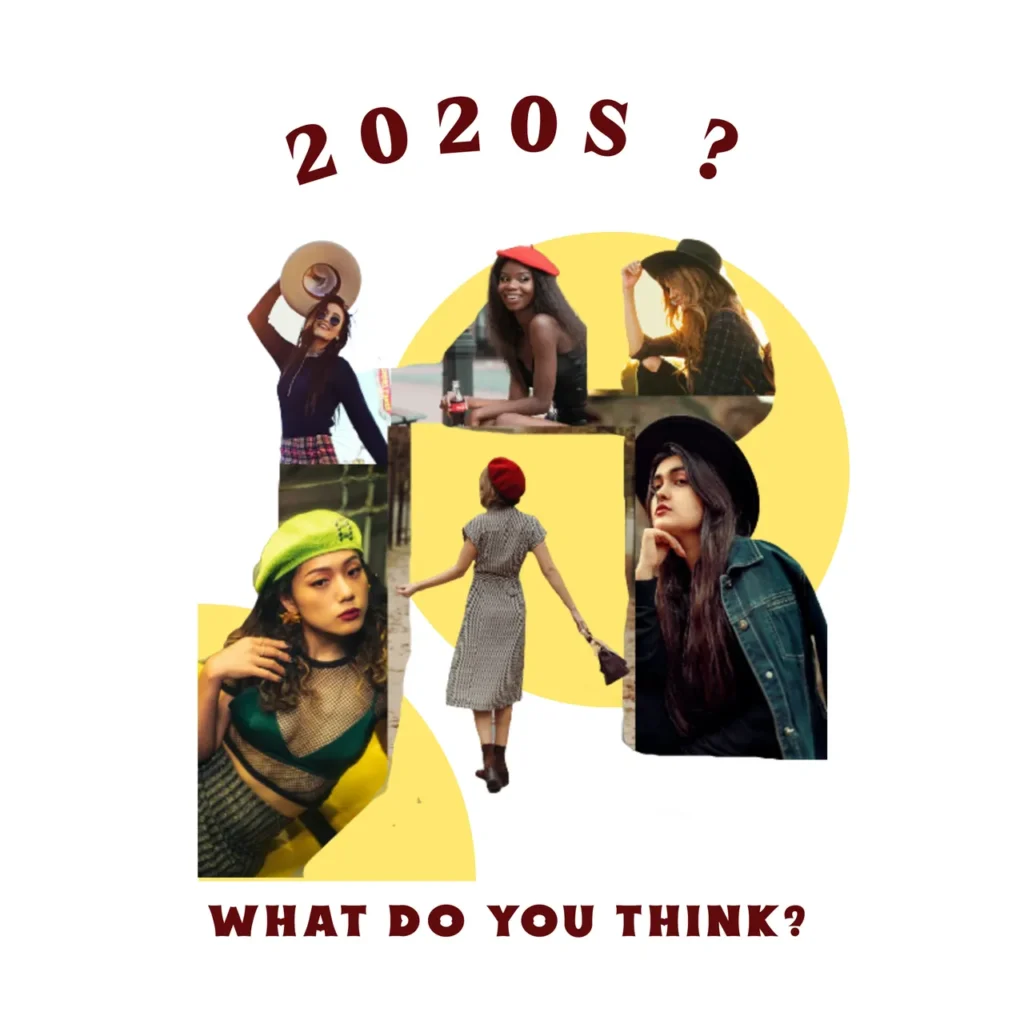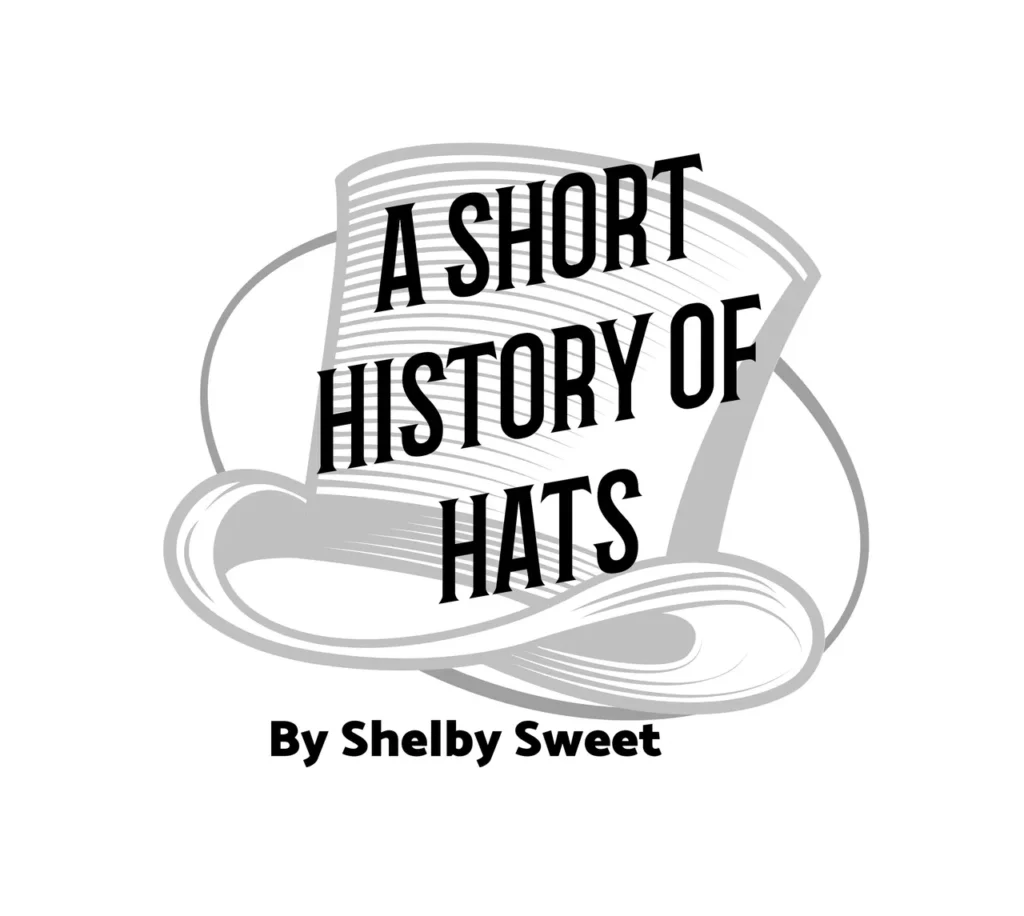
“What’s that? A hat. Crazy, funky, junky hat. Overslept, hair unsightly. Trying to look like Kiera Knightley. We’ve been there. We’ve done that. We see right through your funky hat.”
— Alex Russo and Harper Finkle, Wizards of Waverly Place
Beginning to the 18th Century
Our first hat highlight takes us all the way back to 3200 BC to a tomb in Thebes, where paintings depicted the ancient Egyptians sporting straw coolie-like hats. Much more than just a fashion statement, these low, cone-shaped hats were practical and used to keep their heads cool and protect their eyes from the sun.
While there were a few hat styles featured throughout Roman and Medieval times — like the close-fitting, brimless felt or leather “pileus” worn by commoners and freed slaves in ancient Rome, and the tall, pointed, conical “hennin” at worn by aristocratic women in Medieval Burgundy, France, and England. Typically, most people did not wear hats in their day to day lives.
It isn’t until we fast forward to the 16th century that we see more hats in daily fashion. We see “shepherdess” style hats become popular — these were flat-brimmed straw hats with a shallow crown that were usually trimmed with flowers or ribbons. While this style first started popping up during the Renaissance period, it wasn’t until the 18th century that they became widely popular, along with the “bonnet” hat, the brim of which was somehow supposed to protect the wearer’s modesty. During this time, hats were used as more of a status symbol, rather than practical protection from the sun. Back then, different hats were relegated to different socio-economic classes. The wealthy would pile on ribbons made of silk or lace, delicate flowers, and other decorations, while the working-class had smaller, more modest headgear.
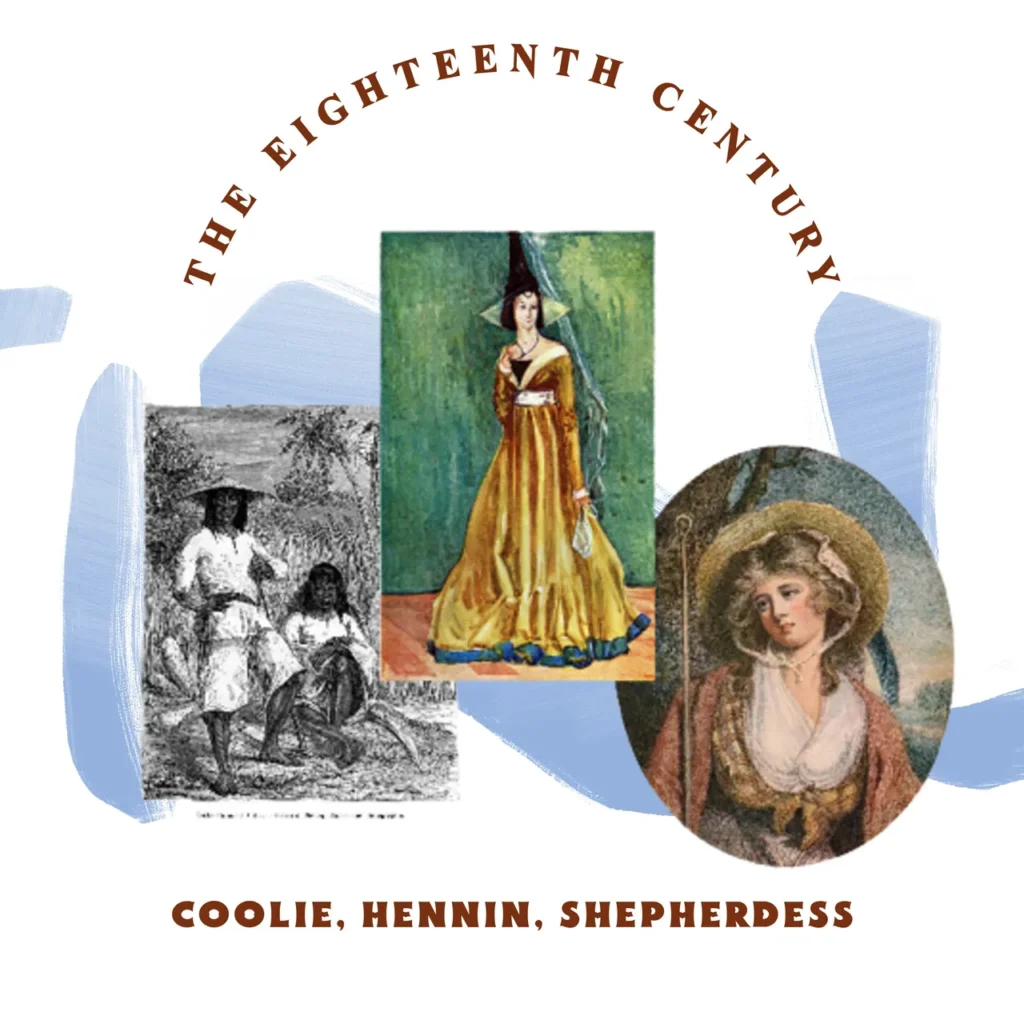
1900s & 1910s
During the early 1900s, it was considered more attractive for a woman’s silhouette to resemble an ‘S’ shape — talk about unrealistic body expectations! This gave celebrating a woman’s curves a whole new meaning, and the hat was essential in achieving this shape. These smaller-brimmed, towering “3-story” or “flowerpot” hats that had first started popping up in the 1880’s were now the talk of the town! Throughout the decade, hat sizes grew larger and more ornately decorated. These hulking headpieces were secured tightly in place by hat pins as long as 18 inches — which doubled as a means of defense against any unwanted male attention. Just because these old pieces didn’t appear practical at first glance, that doesn’t mean they didn’t have their uses!
The grandeur of hats increased until the 1910s. With the outbreak of the first world war, public perspective on fashion shifted dramatically. It was considered unpatriotic to be overly concerned about one’s appearance — at least in the public eye, anyway. There was a war going on, for goodness’ sake! If a hat was to be worn at all, people were opting for smaller, plainer ones, with minimal decoration, that fit close to the face, like a “Tudor beret.” This look gave the wearer a more youthful appearance, as most women tried to emulate the “soldier’s girlfriend” look (the heroine of the era).
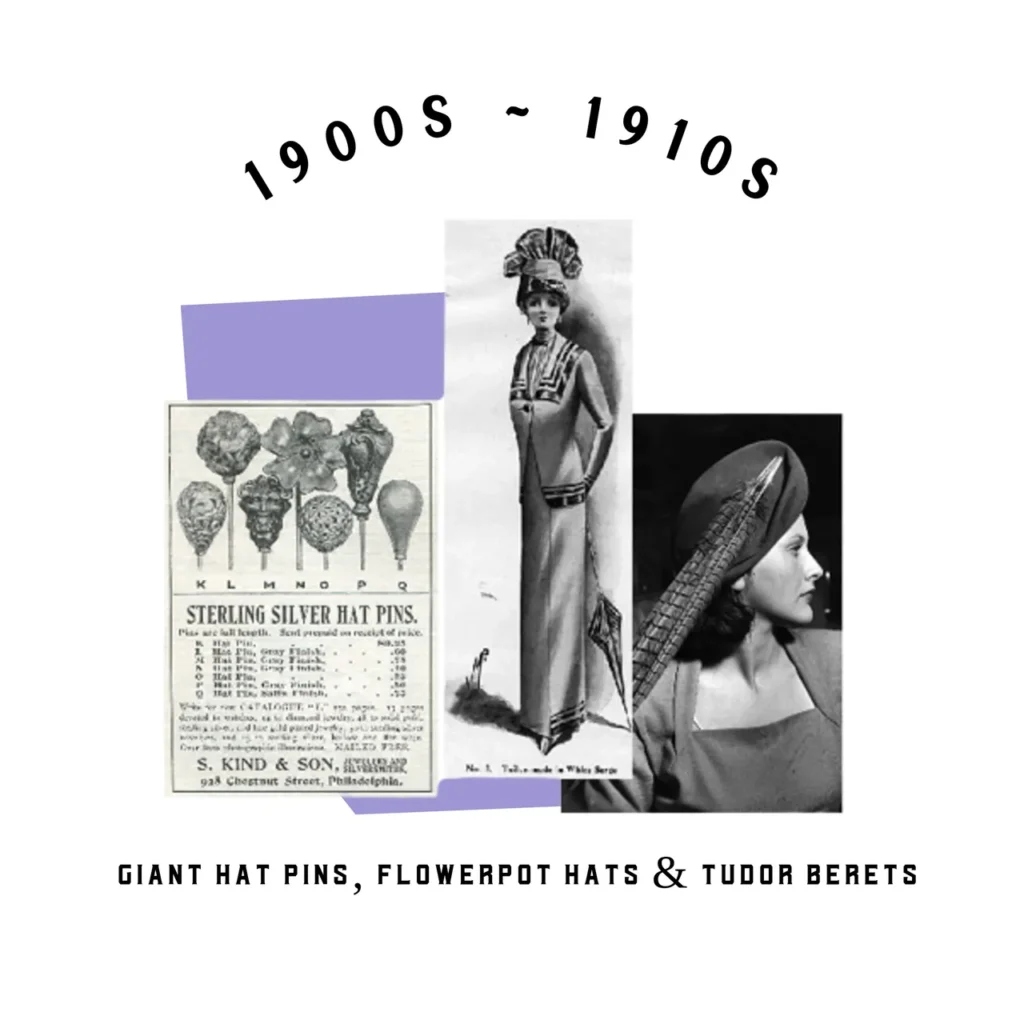
1920s & 1930s
The 1920s was the age of the “flapper” era, and “cloche” or “bell” hats were all the rage! These small-brimmed, bell-shaped hats were a staple of the time. During this post-war period and as the art deco movement started gaining traction, women were back to customizing and adding embellishments to their hats. Flowers, silk ribbons, and lace were proudly affixed, and we can’t forget about the signature flapper feathers! Sparkling headbands or bandeaus were also common among the ladies of the period. They were fun, feminine, and chic! No evening ensemble was complete without one.
As the 1930s rolled around, menswear began to greatly influence women’s fashion. The most popular hat by far was a woman’s version of the “fedora” hat. Often worn at a dramatic sideways angle, these hats were the perfect counterpart to a tailored mannish pantsuit; however, the fedoras of the ‘30s were a lot softer and more feminine than the ones we’d see today.
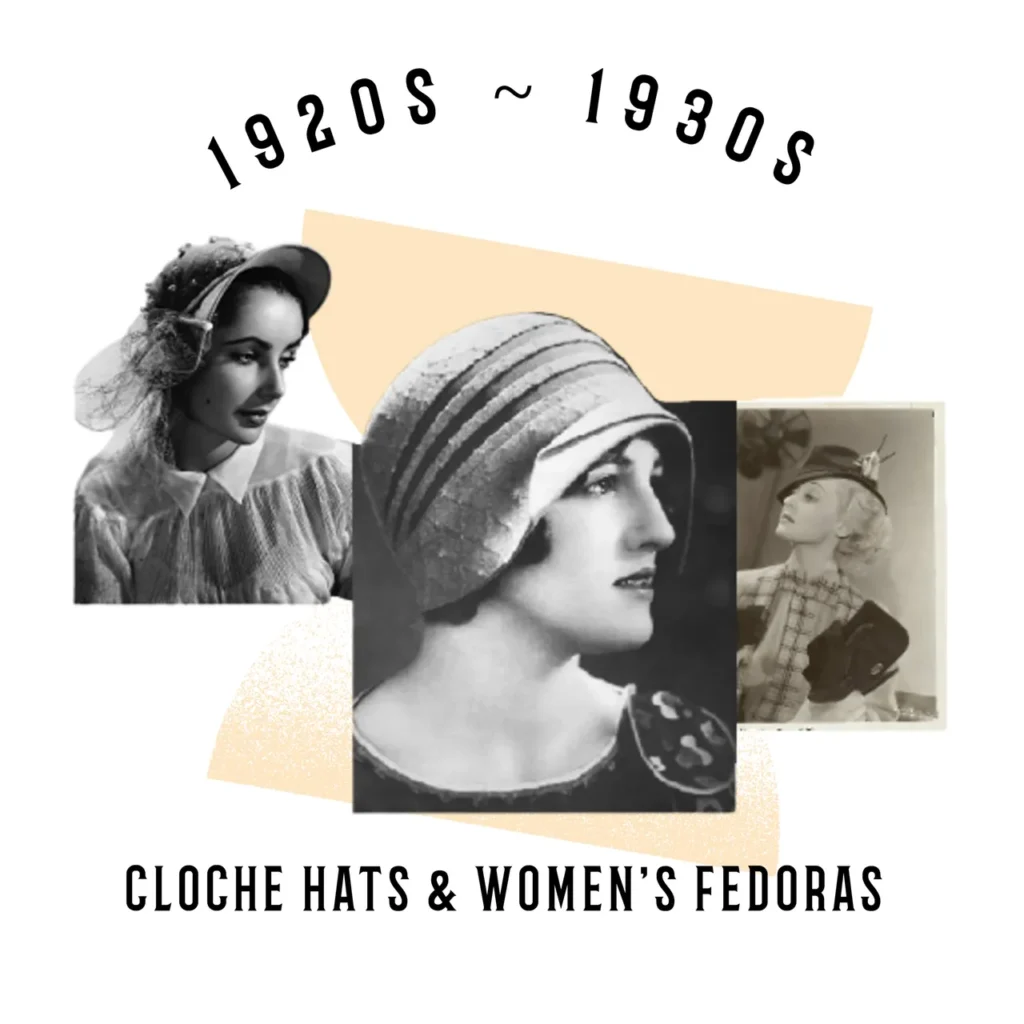
1940s & 1950s
The 1940s saw another World War, but this time around the women were not shying away from their spectacularly fashioned hats. Quite the opposite, in fact. The women of the era adopted the phrase “pièce de résistance” (resistance piece) and were considered patriotic as they donned their favorite styles because grand, outlandish hats went against Nazi beliefs. Turbans and “doll hats,” small hats that perched on the very front of the forehead, were very popular, but styles varied to fit a range of different face shapes and hairstyles.
With the intense rationing of the period, you would think there wouldn’t be enough material for such splendid hats; however, hat materials were the one of the few household items not rationed! Women could accentuate their hats with feathers, veiling, and artificial flowers as much as they pleased and with pride. The brighter and bolder, the better!
That being said, the popularity of hats themselves started to dwindle after the war ended, and it would be some time before they returned in splendor. The hatmakers of the 1950s tried to rekindle the people’s love for their craft by making a variety of even more extravagant hats. They were marketed as the essential accessory to complete any outfit! Unfortunately, the flat “pancake” or “cartwheel” hats that were frequently seen throughout the era were rarely ever worn, despite the hatmaker’s best efforts to persuade women to purchase them. After the war, freedom and individuality was more symbolized by going hatless.
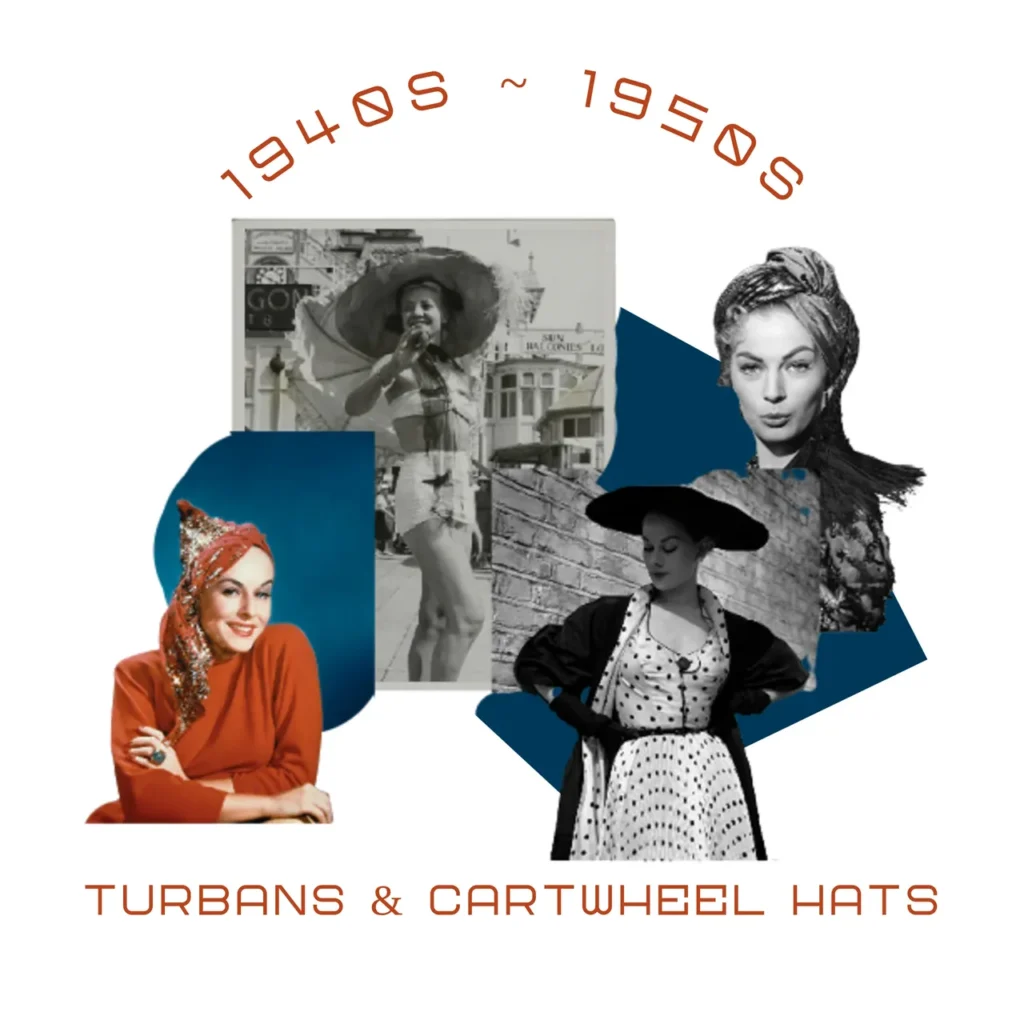
1960s & 1970s
Thanks to Jackie Kennedy, hats saw a small resurgence in popularity with the resurrection of the “pill-box” hat. These small, cylindrical-shaped hats featured a flat crown without a brim, and they became a Kennedy signature while she was first lady. However, the days of hats being an essential, everyday accessory were long gone. Even the Catholic church dropped their head covering requirement from their dress code in 1967.
Throughout the 1970s, famous actresses like Dianne Keaton, Fay Dunaway, and Bridget Bardot began wearing hats in their daily life. While their fashion choices influenced the women of this period, hats still were nowhere near as popular as they had been in decades previous. That being said, floppy hats — a more modern twist on the traditional sun hat, with a broad and curvy brim that accentuated the voluptuous curls of the ‘70s — started to gain traction during this decade — along with the smaller knit/crochet caps, often in many colors.
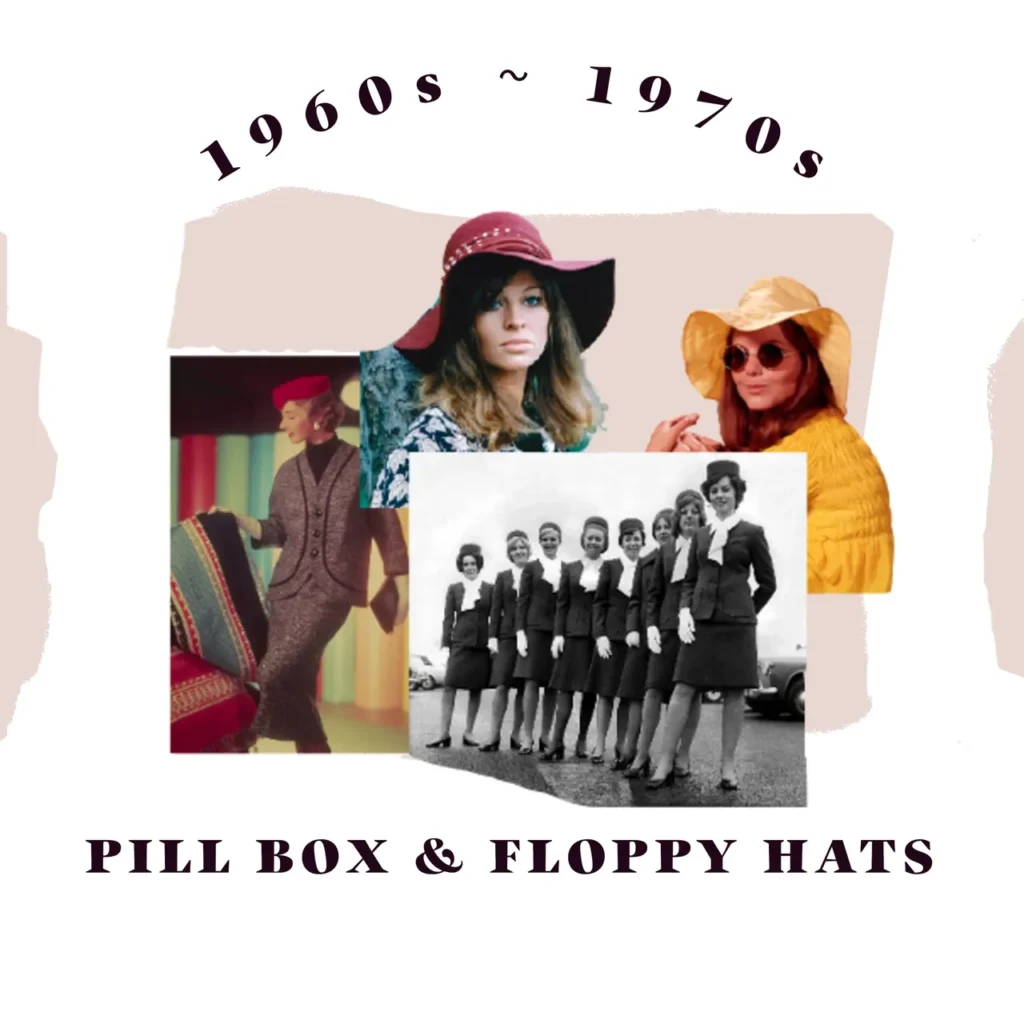
1980s & 1990s
The elegant fashion icon, Princess Diana, kept to the tradition of English royalty and successfully showcased a wide range of hat styles — there was a hat for every occasion, from the ubiquitous Afternoon Tea to the tradition of the Royal Ascot Racecourse. It was through her influence that hats, themselves, especially those with wider-brims, were once again rising in sales, albeit still nowhere near their former glory. “Bucket hats” were also common for this period, although you typically didn’t see these on the Princess.
Although medical journals from as early as 1927, and especially from 1955 on, were expounding the sun exposure/skin cancer connection, it wasn’t until the 1990s that the general population became more knowledgeable about the harmful effects of the sun’s UV rays. Skin cancer gained awareness, and we once again sought out our hats for protection. The resurgence of hats was in full swing as updated straw sun hats hit stores everywhere. While slightly more modern, these hats were similar to the ones we’d seen in the 18th century — trimmed with ribbon bands, bows, silk flowers, or feathers. Here is where we also see the appearance of the designer baseball cap style, where everyone from truckers to college baseball teams — and even high fashion houses — were decorating these brightly-colored caps with their logos. And we couldn’t possibly forget about the classic, grungy beanie — although we’ll be seeing much more of this style later.
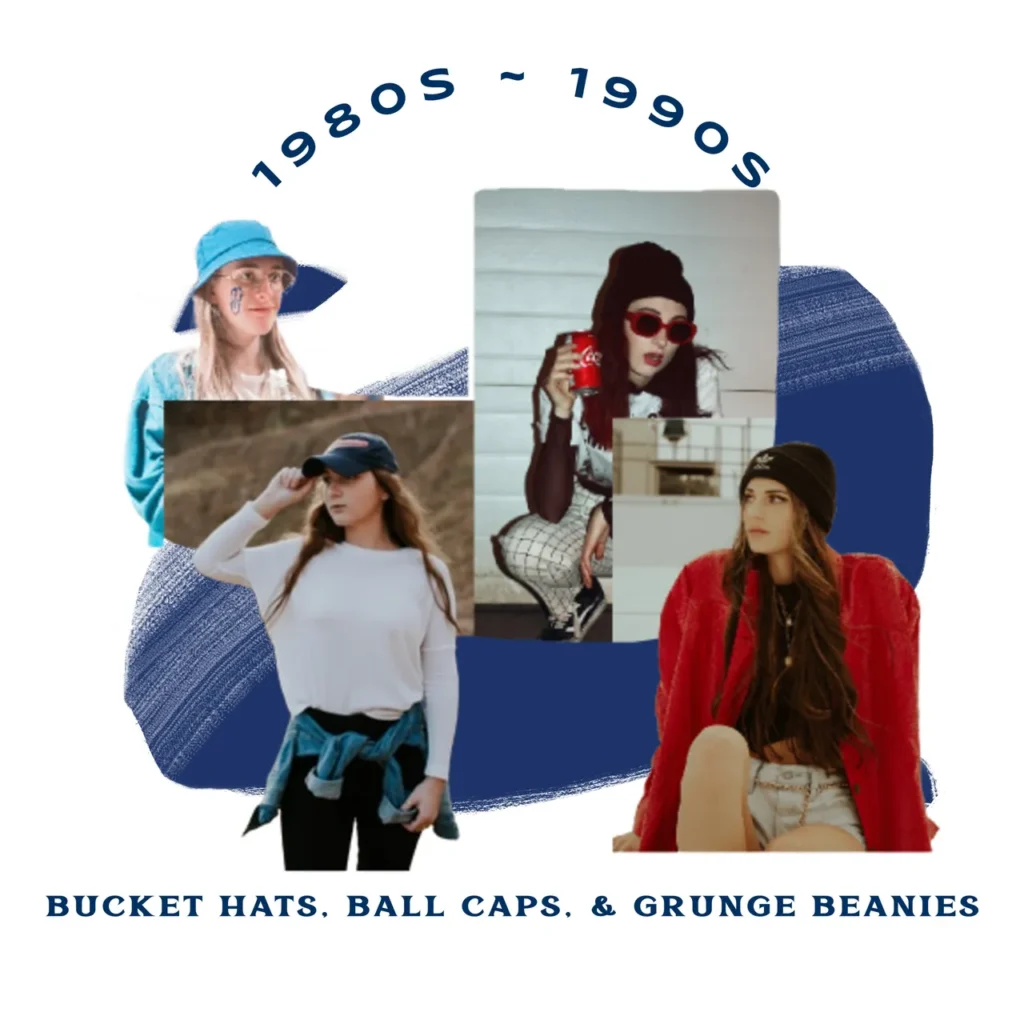
2000s & 2010s
The 2000s hat styles were carried over from the 1980s and ‘90s. People were actively wearing hats to protect their skin from sun exposure, and they cared about Ultraviolet Protection Factor (UPF) ratings — or how much UV radiation a fabric allows to reach your skin. “Bucket hats” and bedazzled “trucker hats” were often paired with sunglasses and made with skin-friendly materials, such as straw, linen, or canvas.
The 2010s brought beanies back, as “hipster” fashion reigned supreme. These slouchy beanies were meant to give off a relaxed or even broody vibe to the self-proclaimed hipsters and artsy college students alike! Straw floppy hats were also brought back onto the scene, specifically by fashion, travel, and lifestyle social media influencers and bloggers, both for protection from the sun as they traipse across the globe and as a stylish accessory.
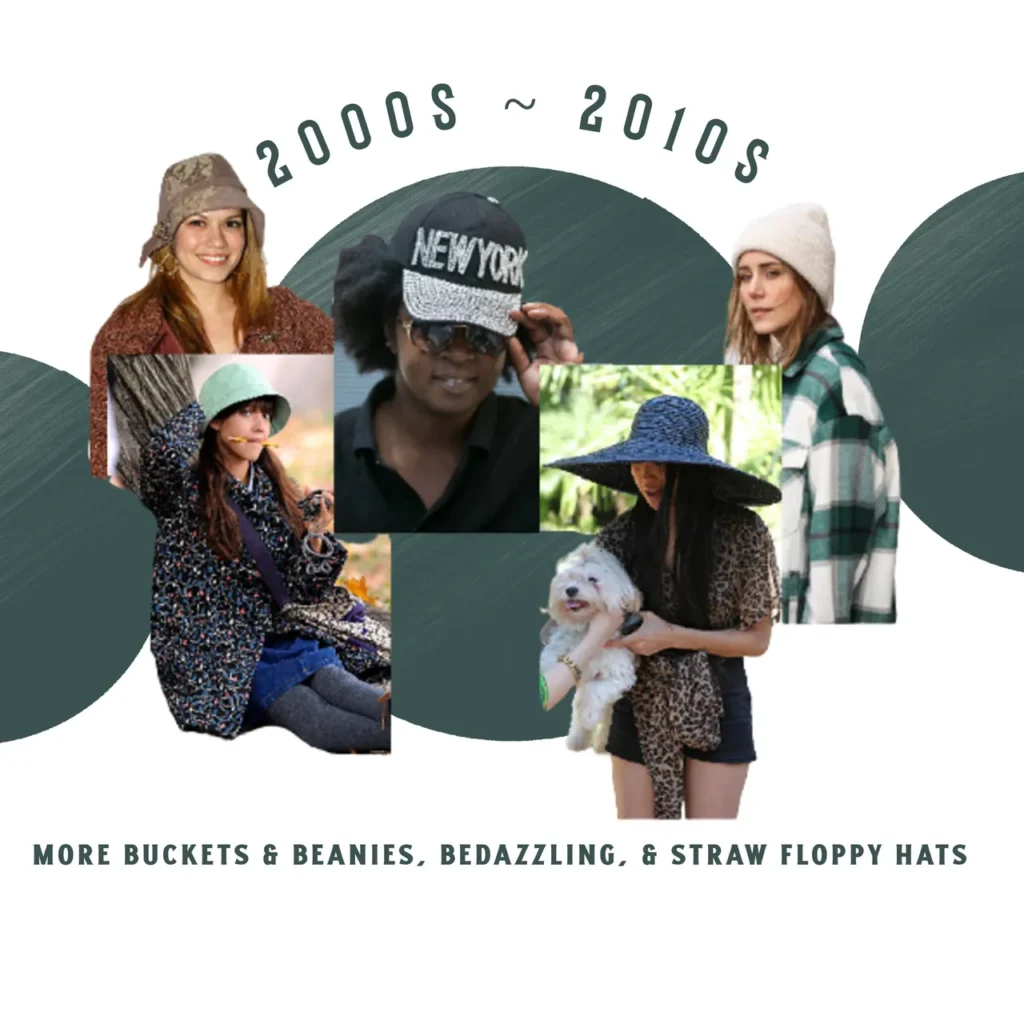
2020s…?
So far, the 2020s have seen the return of the “beret,” a round, flat disc of felted wool fitted closely to the head that was first made popular in Europe during the 15th century and favored by the poorest classes for its optimal protection against the weather. This cap, typically made from felted woven, hand-knit, or crocheted wool, is the number one hat trend at the moment, followed closely by the cowboy hat — if you can believe it! These retro-inspired hats come in a range of colors and (similar to the cloche hats of the 1920s) can be embellished to suit your personal style with feathers, metallic belts, or sparkling gem bands.
History has a way of repeating itself, and hat trends have proven to be no exception. We’ve already seen the ancient, ultimately practical, coolie-style hats brought back in different, more modern variations again and again — most recently with floppy sun hats. Who knows! Perhaps a modern version of the “flower pot” hat will be next to take over the scene? Or maybe we’ll see something new altogether!
What new hat trends do YOU think we’ll see in the next decade? Let us know what you think!
